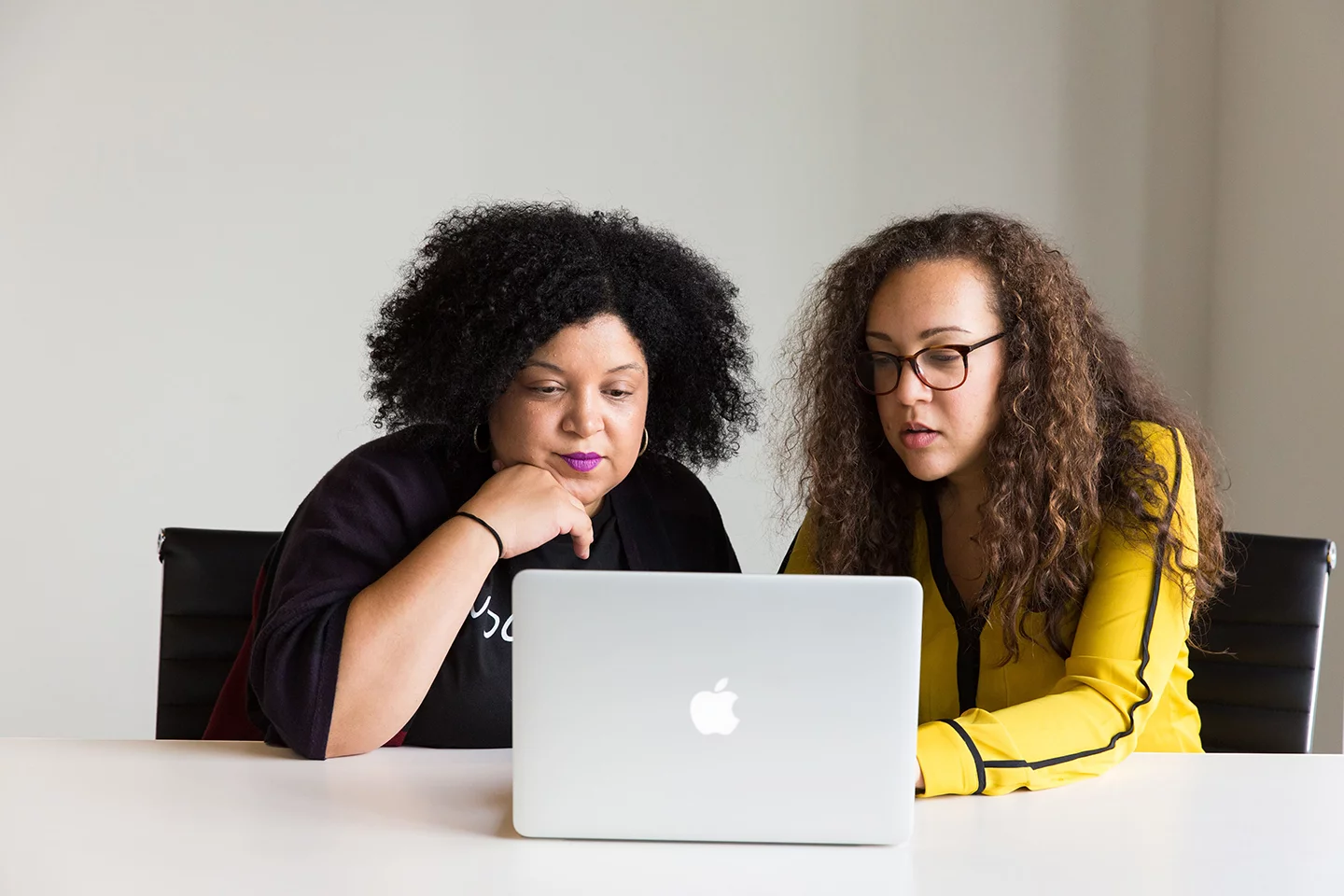We recently kicked off our 2021 Future of Work Virtual Roundtable Series with NYU “Happiness” Professor Daniel Lerner. In a highly anticipated session entitled “Passionately Successful: Making the Most of Ambition & Happiness,” Lerner discussed how cutting-edge science now shows that when we pursue our passions in the correct way, we can realize the highest levels of personal and professional success.
He defined two types of passion: harmonious and obsessive. When you’re harmoniously passionate, you not only love what you do, but you are more focused, energetic, and productive and live a far more fulfilling life. Conversely, obsessive passions are marked by a compulsive, dogged pursuit of achievement, leading to guilt, shame, pessimism, unhappiness, and, far too often, early burnout.
Below is an excerpt of Lerner’s presentation. Join us for our upcoming Future of Work sessions by signing up here. And, to experience Mursion’s virtual reality simulations and see for yourself how this platform can support your own business to achieve its leadership development and other business goals, schedule a demo today.
“For the past, almost 10 years now, I have been teaching “Science of Happiness” to more than, at this point, about 7,000 students at New York University and “Principles for Thriving” to folks around the globe.
All these talks and classes cover opportunities to thrive in life, and we’re going to talk about those things today. Happiness, well-being, passion, and plenty of others, they don’t ignore the challenges to living a good life, like things such as stress, anxiety, and difficult times. Here’s the thing, good times and bad times are not an either-or proposition. As we all know, there is always some of each in our lives, and when things get crazy like right now, given everything that’s happening in the world, when we need to rethink our lives, our home lives, our work lives, understanding how to get more of what we want and less of what we don’t is essential, but also confusing.
Due to COVID-19, we are being looked in the eye on a daily basis and told, ‘You are going to have to reimagine what it means to live a normal life,’ at work, at home, everywhere. As a result, many of us are asking the same questions. I want you to leave today with an answer to one of them. What does it mean? What can I do? How can I help others to live happy, successful lives when the world as I knew it ceases to exist?
As I mentioned, I’m involved in positive psychology, so one of the big questions we ask is, “What’s going well for you right now?” even when things are challenging. The responses, they’ve not been about happiness. This idea of teaching ‘Science of Happiness,’ it’s not necessarily all that. It’s not about happiness, it’s about being immersed, it’s about being engaged.
The Difference Between Happiness and Wellbeing
In the third class of every semester, I’m really blunt and I tell the students I have lied to them. I explained that the course should not be called ‘The Science of Happiness.’ It should be called “The Science of Well-Being.” If we call it ‘The Science of Wellbeing,’ we would have 6 students in there instead of 600 students in there because happiness is important. It is the draw. It is the buzzword. It sells cars, and it sells soft drinks, and it sells happy meals, and everyone wants it and yes, we all need it. It’s right up there as positive emotions.
Happiness is not enough. Now, well-being, that is a much, much richer concept. What we’re going to walk through is this acronym. This is what I am hoping you will take away if nothing else from today. This acronym is PERMA. PERMA is renowned psychologist Martin Seligman’s theory of wellbeing.
It is this idea of the five factors that are essential to our having wellbeing. What are these? Positive emotions are what you think they are in lots of ways. It’s happiness. Positive emotions are feeling good and we’re not putting that down.
Let me be clear, positive emotions, we can define in many, many different ways. Some of us might think about positive emotions as say jumping for joy. We actually say jumping for joy or physical like, ‘Oh, this is wonderful.’ We might envision as laughing like real laughter. Positive emotion, the way that we look at it in literature in the research, can also include calm, moments of peace. Positive emotions can include transcendence. It can include pride. Positive emotions have a whole spectrum to them. It’s not a simple idea of happiness, but it is still key to wellbeing.
Engagement is the moment when we are super absorbed. We’re immersed in an activity. Time flies by when we’re in flow. I feel like flow is more important to me than happiness. Now, if you think about flow, there’s literally, according to research, and you might recognize this, there’s no emotion in flow.
When you are in flow, you’re not necessarily feeling great. When you’re done with flow, you go, ‘Whoa, what happened? Where’d the time go? That was amazing.’ When you’re actually in flow, you are engaged. It’s separate from positive emotions. It’s related because it might afterwards allow for reflection that is positive, but often in the moment, you are simply in flow. That’s what engagement is. When you’re so absorbed in activity that you lose track of time.
Connection, Community, and Contributions
Now, relationships are positive relationships and that is relatively self-explanatory. Those can happen all over the place, but what relationships are beneficial for you? Meaning, we define meaning as a connection to something larger than ourselves. That can be a connection to the community, a connection to something spiritually, a connection to the world, a connection to how are we contributing to something larger as well.
Finally, accomplishment. Accomplishment is an interesting one. It’s a bit of a conversation right now in the world of positive psychology, which is there’s the capital ‘A’ for accomplishments, and that capital ‘A’ can be like, ‘I got a raise. I got a new job. I got into college. I met this wonderful person.’ Whatever it might be, those are capital ‘A,’ but they don’t happen every day. For a lot of us, the ‘a’ in accomplishment is a small ‘a.’ What did I set out to this morning? Do the laundry, answer my emails, spend time with my family? Check, check, check. It’s not always the big ‘A.’ It can also be the little ‘a.’
The Effect of a Global Pandemic on PERMA
One of the other things that’s so interesting, especially looking at COVID right now, from the research that’s emerging COVID over the past nine months has been how this has changed in COVID. That is to say pre-COVID when you look at measurements of PERMA, relationships tend to be queen. They tend to rule above everything. That’s changed during COVID, where meaning now weighs a hell of a lot more.
The folks who we’re finding are most resilient during COVID, who are able to deal with these challenges, despite the fact they might not be so happy, they might be challenged in relationships, are the people who have greater meaning in their lives.
Here’s the thing, times can be good, times might be bad. Happiness is still happiness. Meaning is still meaning. The idea is that PERMA can provide some of the stability that we are thirstiest for during these times of change. The question of course becomes, what can you actively do?
What I want to share with you are a number of different exercise interventions, all of which are empirically sound. That is to say, we have looked at them and replicated them in various research and found that they focus on very distinct parts of wellbeing. For example, positive emotions of gratitude journal. My guess is most of the folks here, being in the business that you’re in, you are familiar with gratitude journals and a number of you may well keep them as well.
The Power of Presence and Gratitude
For those of you who are not familiar, a gratitude journal is simply writing three things down that you are grateful for at the end of each day. Not just writing those things down, but those things and why. Not just I’m grateful for my dog, I’m grateful for the walk that I took, I’m grateful for my colleague who was helpful, period, but I’m grateful for my dog because every time I come home, she gives me the belly. She just raises my spirits. It’s simply that, it’s one sentence. I’m grateful for the park near my house because today I got to walk and really enjoy something special when I was having a challenging time. Those three things.
It’s not just that we’re looking at gratitude and moving on. What we’re doing is we’re rewiring the way that we look at the world. For some of us who are challenged, especially right now to be able to see things that are good, I certainly have clients who are like, ‘I’m not seeing anything I’m grateful for.’ That’s fine. That first day on gratitude journal is tough as the second day, as the third day, but they start to realize there are not three things you’re grateful for. There are 30 things you’re grateful for.
They’re grateful for the fact that they actually get to spend time with their kids, even though it’s really challenging to be home with their kids right now. They’re grateful for this colleague in a way they hadn’t thought of before. You start to see the world very differently. By the end of about 30 days, we’re finding our levels of positive emotion have risen quite a bit because we have been rewired to see things we’re grateful for. Not that everything is wonderful, but that we’re able to see the good, in addition to the challenges.
Now, people mentioned meditation before. Sometimes I’ll bring that up, depends on the audience, but just breathing, the basic intro. Some folks will shy away from meditation. “I’ve tried that. I can’t do it. It’s too hard. I get too bored.” What we found is that just breathing deep belly breaths twice a day for three minutes and focusing on the breath. Yes, it sounds a lot like meditation, we’re just not using the word. At that point of twice a day, three minutes each, we start to feel higher levels of positive emotion. Something as simple as this can be helpful. Also, both of these are five minutes or less, something we strive for.
Now, when it comes to engagement, we have found the character strengths. Now, someone mentioned that irritation, that can be wonderful. We found the character strengths is where it can be as well. Character strengths, if you haven’t used them are not the talents or the skills that we have, like we’ll find in certain StrengthsFinder assessments, but these are strengths of character. These are love. These are gratitude. These are bravery. These are humor, appreciation of beauty and mastery, justice, wisdom.
When we use them at work, the opportunity to become engaged, to get into flow, rises considerably. Workplace that does not encourage using character strengths, they’ve got a 9% chance of being engaged consistently. Those workplaces that do use character strengths consistently, you have about a 73% chance. That is a sizeable difference. People who use a strength in a new way every day, they tend to be far more engaged.
When it comes to meaning, which consume a really amorphous thing, these are two questions that have been asked and researched by my colleagues at UPenn, Adam Grant and Angela Duckworth, where they asked, “How does the work that I do to either help other people and/or help make the world a better place?” These questions have been asked to firefighters, nurses, teachers, and not just asked and answered, but considered, brought home to the dinner table, asked in the workplace, asked amongst teams.
When people consider these or even journals, if that’s the preferred way of going after them, when people ask these questions, their level of meaning tends to rise. Introducing this to a client, introducing this to a team, introducing this to your family can be a rather powerful way of raising our level of meaning.
Finally, relationships, and I hate to say this, but this comes back to Barbara Fredrickson’s work at University of Carolina during the pandemic, which is yes, we can text. Yes, we can email. Calling like old school calling or Zooming, even though we tend to do it a lot, still has a far stronger effect on our ability to raise positive relationships than any other way.
If we can bring ourselves to do it, this is quite a powerful exercise and then this one, which I’m sure many of you know, but again, we have good research on it. Just three quick notes in the morning, “Hey, I really appreciate X.” Text to someone else, “Hey, I really appreciate what you did yesterday with Y.” An email to somebody else, “Hey, I really appreciate dot, dot, dot.” Oh, by the way, if you’re having a problem with the page, we can certainly revisit it later on, but that should be it. This is it.
These are ways we can raise levels and again because they’re like buckets. If it’s you and you’re like, “Oh, relationships are good, I’m super engaged,” meaning is really challenging, this might be a nice exercise to go with. Again, of course, for all of the rest as well. If I were to give you an assignment today, it would be, go home and teach one of these to your family, teach one of these to your friends.
What are the three things you want to get done that day? Very simple. Check it again at the end of the day, laundry, emails, sitting down with my partner or my child or a friend for a certain amount of time, keep it manageable. When you check it off by the end of the day, your sense of accomplishment rises quite a bit and or laugh, play and/or laugh. These are ways that we can raise our levels.
Now we began this talk with a question. We began to talk with the idea of how can I be happy? How can I find well-being in a time where everything has changed? I believe that it really depends on how we define what happiness is. As you know now, we’re going to define it as well-being. I you want to reimagine what well-being is, what happiness is for you, for your clients, for your family in the workplace, at home, these five basic factors of PERMA can be essential to realizing well-being for everyone around you.
Balancing Ambition and Happiness
Passion: In the research, passion, which we define as a strong desire or urge to do something for at least eight to eight and a half hours a week. There’s a sharp divide in between what we call healthy or harmonious passion and unhealthy what we call obsessive passion. This research comes from Bob Vallerand at University of Montreal. The foundations to this passion are, harmonious is something we do because we love it, we look forward to it, we actively want to do these things.
That is very different from obsessive, which is I’m driven by money, by reputation, by glory, by status. I do this because it’s a great business card, it pays me a lot of money, because people look up to me — very, very different. Oversimplifying it, harmonious passion in a pie chart of life, includes many other colors. I do this as a passion, but I also do these other things. Obsessive passion tends to be very, very much one color. I can’t stop doing this thing, even when I leave it, if I leave the office, if I leave the studio, if I leave whatever it might be, I’m still thinking about it. I can’t get it off my mind.
That’s the way that obsessive and harmonious passion, in a very simplified way, tend to divide and the outcomes are quite remarkable. By the way, a passion does not need to be work. When people have harmonious passion, things they love to do and they make sure they put them into their schedule, that will color, often, the rest of their lives. When we look at research on folks who have harmonious passions, cycling, tennis, cooking, gardening, they are happier in the workplace. Things bleed over. When they’re obsessive passions, they are less happy in the workplace.
There are lots of other ways to look at passion, but the basic idea is, we do it because we love it, or do we do it because we have to? How much time does this take up in our pie chart of life? If you want to move from one to the other, how do we just start to program it in and have other people associated so that we can be held accountable and that we can look forward to doing it for more than just one reason?”
Subscribe for the latest Mursion articles and updates.
By clicking the sign up button above, you consent to allow Mursion to store and process the personal information submitted above to provide you the content requested. View our Terms and Conditions.




